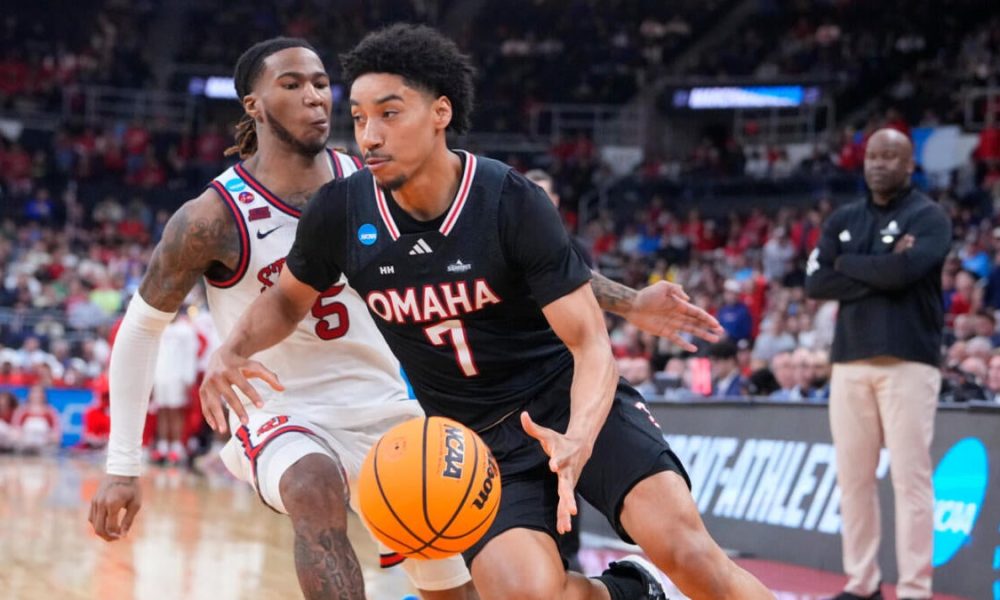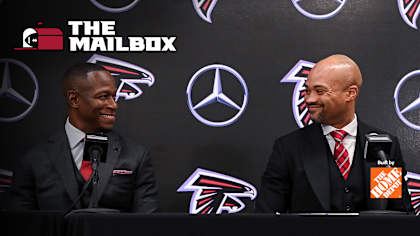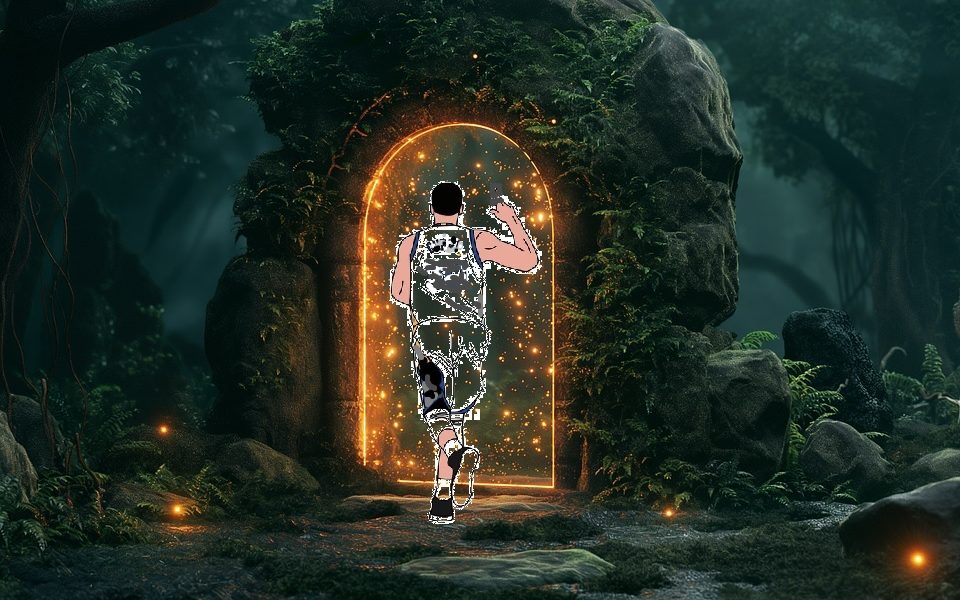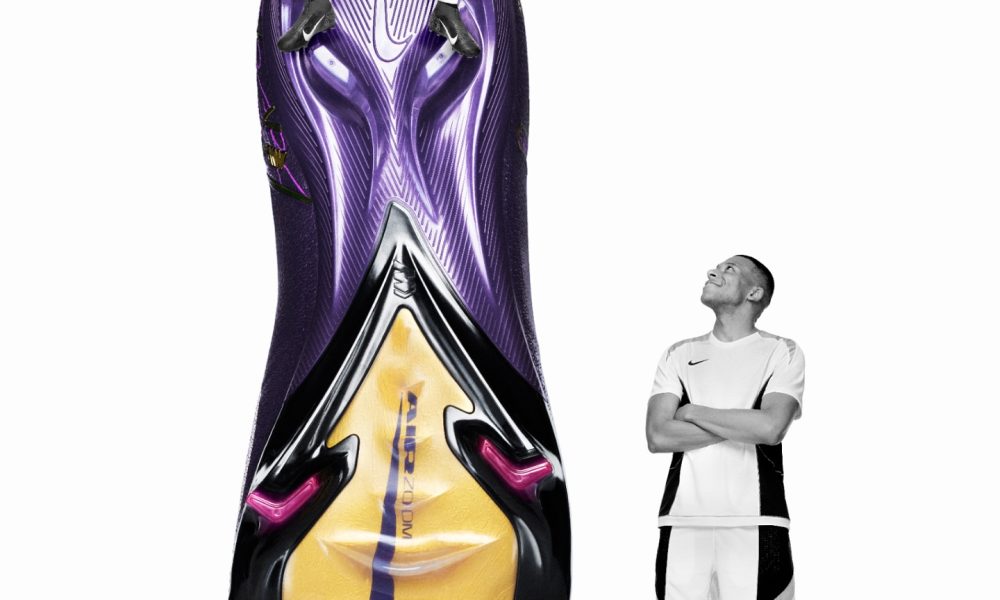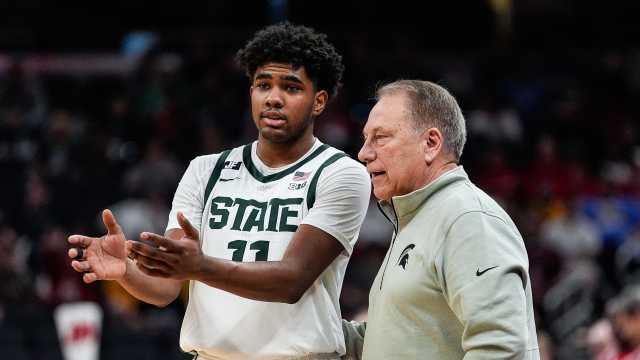NIL
How college athletes will be paid after House v. NCAA settlement


The House v. NCAA settlement was officially ratified on Friday, clearing the way for universities to directly pay athletes starting in 2025. The settlement is expected to formally take effect on July 1, 2025, after it was approved by Judge Claudia Wilken of the United States District Court for the Northern District of California.
This settlement marks one of the greatest shifts in the history of college athletics by paving the way for formalized pay-for-play for the first time ever. The NCAA cleared several rules banning the practice in the lead-up to the settlement, and the new reality is now here.
So how will players be paid, and what impact will this have on the structure of college football heading forward?
How will players be paid?
Starting in 2025, colleges will be able to opt into revenue sharing with athletes. Athletic departments will be allowed to use their own funds to pay players, with a cap expected to hover around $20 million annually per school. That figure is intended to cover all athlete compensation across varsity sports — not just those that generate revenue.
The number represents approximately 22% of average athletic department revenue across power conference athletic departments. The settlement estimates that the total cap will start at around $20.5 million per school in 2025-26 and could rise to nearly $33 million per school in the next decade. Between the revenue sharing, scholarships and other athletic benefits, the NCAA believes that compensation to athletes could push close to 50% of athletic revenue in many athletic departments.
There are few guidelines in place for how the money should be distributed across sports. The expectation is that more than 70% of the funds — around $15 million — will go to football at power-conference schools. However, individual schools have the discretion to allocate funds as they choose. For example, Kentucky or UConn could decide to spend 50% of their budget on men’s basketball. Non-football schools in conferences, like the Big East, could gain a major advantage when funding other programs.
It remains unclear how Title IX will factor into the model, though at least some funds will likely be directed toward women’s sports. While players will be compensated directly for participating in college athletics, potentially through contracts worth seven figures or more, they still won’t be classified as employees. Instead, their compensation is expected to resemble that of independent contractors.
Which schools will be eligible?
Any NCAA schools that opted into the House settlement will be allowed to participate in revenue sharing, regardless of level or funding. Schools in the Big 12, Big Ten and SEC have all confirmed that they will pay out the full $20+ million rev share each season. The AAC notably is requiring schools to rev-share $10 million with their athletes over the next three years. Sacramento State, an FCS school hoping to transition to FBS, also intends to share revenue. Any school at any level of the NCAA can technically opt into the agreement as long as they in exchange follow the terms of the settlement. Plenty of FBS schools, however, will forego the major new expense.
Who will administer the new sport?
In the wake of the settlement, the Power Four conferences will take over regulation and enforcement of player compensation issues. They plan to create a new organization called the College Sports Commission, and will hire a CEO soon after the settlement. Power conference schools will be pressured to sign onto the new organization or risk expulsion from their conferences.
The CSC will be in charge of enforcing the upcoming salary cap and working with Deloitte to create the NIL clearinghouse. Additionally, they will police and enforce punishments for circumventing the salary cap or improper athlete compensation.
The decision to move player compensation to the CSC was spurred by the plaintiffs in the House case. The NCAA will continue to focus its enforcement efforts on its traditional issues heading forward, including player eligibility, academics, competition and a variety of other topics.
Can players still sign school NIL contracts?
The new agreement will allow players to sign outside contracts. However, a new wrinkle requires NIL contracts to be sent through a clearinghouse run by Deloitte to ensure “fair market value” based on an actual endorsement. For example, a rotation offensive lineman could potentially make six figures in the NIL era. While they will still be allowed to do that with a revenue-sharing contract, future NIL contracts are expected to be far more stringent. Additionally, the NCAA has the right to prohibit NIL compensation from a group it classifies as “Associated Entities or Individuals,” which would seem to mean boosters.
Take a player like Cooper Flagg at Duke. His brand value would be considered high for Duke, which could allow the school to pay him for an endorsement without pulling from their revenue sharing money. Notably, Texas coach Steve Sarkisian claimed Quinn Ewers did not take any money from their collective, instead signing endorsement contracts to claim his millions.
Per reports, Deloitte told ACC officials that 90% of existing NIL contracts with public companies would have been approved. More than 70% of deals with booster collectives would have been denied.
The rule is intended to prevent schools from using fake NIL deals to circumvent the salary cap. However, the likelihood of this is highly dependent on whether the Deloitte-run clearinghouse will have any teeth. At least one high-profile sports lawyer has argued for athletes to refuse to disclose NIL deals to the clearinghouse. It remains to be seen how the NCAA will attempt to handle a punitive case of cap circumvention.
The race to keep up with $40 million rosters is shaking college football
John Talty

What will happen to collectives?
There’s no one consensus answer on the future of collectives; every school will handle them differently. Some will sunset their collectives and move all operations in-house. Others will use third-party collectives as a support tool for services like connecting athletes with outside endorsements or financial education. Different collectives have different relationships with their respective schools.
Will rev-share contracts be binding?
The short answer is — no one knows. Arkansas became the first school to publicly hire an attorney to enforce conditions on an NIL contract when quarterback Madden Iamaleava opted to transfer to UCLA. According to CBS Sports’ Brandon Marcello, Iamaleava’s deal requires a buyout of 50% of the remainder of his contract should he transfer.
Earlier this offseason, Wisconsin lost defensive back Xavier Lucas to Miami and similarly claimed that he was flaunting a two-year binding revenue sharing contract with the school. At this point, no formal legal challenge has been filed. Lucas is now on the roster at Miami.
The binding nature of contracts could be a key complication still remaining for the pay-for-play era. It could soon be addressed by the courts.
Is this the end?
Even though the House v. NCAA settlement is coming down, it doesn’t solve the biggest remaining questions around contracts, athlete movement, eligibility, NCAA enforcement power or a plethora of other issues. Key athletics leadership has consistently gone to Washington, D.C., to lobby for federal legislation.
Additionally, former Alabama coach Nick Saban and Auburn coach Tommy Tuberville (now a senator) have spoken to president Donald Trump about an executive order to help clarify rules. Trump has proposed a presidential commission to discuss college football issues, though it has not come to fruition. However, the House settlement will at least bring a backdrop for any solutions to be written on.
NIL
Big NIL boost for Carson Beck after Miami’s dominant Week 2 win

Carson Beck’s stock is more volatile than GameStop’s. Beck earned huge acclaim in his first season as the Georgia quarterback before disappointing expectations a tad bit in his second season with the Dawgs last fall. Now, after a change of scenery and stepping in the shoes of the No. 1 pick in the 2024 NFL Draft, Beck looks like an acclaimed prospect once again.
Through two starts as the Miami QB1 for Beck, the Hurricanes are 2-0 and have their eye locked on the College Football Playoff after narrowly missing the dance a year ago thanks to a late-season collapse. Even without key losses late in last year’s schedule, the ‘Canes hadn’t built a resume full of quality wins. But this season, they’re already on the board with the Notre Dame victory over the reigning national runner-ups.
Then, in Week 2, Miami crushed Bethune-Cookman to the tune of a 45-3 win, which only further boosted Beck’s profile. Always one of the most valuable players in the country according to On3’s NIL valuations, Beck is rising even higher right now.
According to On3’s data, Carson Beck is the second-highest-valued college athlete in the country, only trailing Arch Manning. On3 had Beck’s value jump 9% this week, adding roughly $400,000 to make it a $4.7 million NIL valuation for the Miami starting quarterback.
Beck’s NIL value held steady around $4.3 million heading into the year and remained there through the first week of the 2025 college football season. But after stringing together two strong performances to open the season, On3 saw fit to bump Beck up by nearly half-a-million bucks.
Carson Beck has a chance to harpoon that value or raise it even higher as the ‘Canes face a South Florida club that’s heading down to Miami at 2-0 and ranked No. 18 in the country by the latest AP Top 25 poll. This very well could be a preview matchup between a pair of teams that wind up making the College Football Playoff come wintertime.
NIL
Why college football’s biggest battles are now political

On this week’s episode of Tying it Together, host Tim Boyum talks with Matt Brown from Extra Points.
As the college football season heats up, we are talking about the politics of college athletics, from NIL and conference realignment to even video games. Will politicians intervene?
We tackle it all with the founder and publisher of Extra Points, which tackles all things college sports off the field.
About the Podcast
With the speed of the local news cycle, it’s easy to forget that the politicians who represent us and the influencers in our communities are more than just a sound bite. North Carolina’s veteran reporter and anchor, Tim Boyum, loosens his signature bow tie to give listeners a glimpse behind the curtain, showing us who these power players really are and why they do what they do. Through Tim’s candid conversations on “Tying It Together,” his guests reveal their most fascinating life stories, passions, and help all of us get a better grasp on the issues affecting our communities.
Listen and Subscribe
Apple | Spotify | Stitcher
Join the Conversation
Do you have any thoughts or questions for Tim? Weigh in on X with the hashtag #TyingItTogetherNC. Afterward, rate the podcast and leave a review to tell us what you think!
NIL
What The NIL Market For Wide Receivers Means For Oregon’s Dakorien Moore

Oregon Ducks wide receiver Dakorien Moore is in his true freshman season with the program, but he’s already one of Oregon’s bigger stars. Moore joined the Ducks as a five-star recruit and the No. 1 wide receiver from the class of 2025.
With the addition of Name, Image, and Likeness (NIL) deals in college sports, the wide receiver position has been one of the largest markets. On3’s Pete Nakos broke down which wide receivers are making the most money through NIL deals, representing both from the school and the NIL collective, and the amount Moore is estimated to be receiving from Oregon was revealed.
Per On3, sources have indicated that Moore’s deal with the Oregon Ducks is at least $700,000, and he was the only true freshman to be listed. The other players were all either returning players or acquired through the NCAA Transfer Portal.
While he is up there in his earnings, several wide receivers are earning at least $1 million, which could affect Moore in the future.
Ohio State wide receiver Jeremiah Smith had a breakout performance as a true freshman in 2024 and is believed to not only be the highest-paid wide receiver but also one of the highest-paid players in the sport.
MORE: Three Reasons Why Bucky Irving Could Catapult Tampa Bay Buccaneers
MORE: Oregon Ducks Battling SEC Program For Five-Star Wide Receiver Recruit Kesean Bowman
MORE: Oregon Ducks Predicted To Host First-Round College Football Playoff Game in Autzen Stadium
MORE: Oregon Ducks’ Dan Lanning Addresses Quarterback Austin Novosad Injury
MORE: Unsuspecting Oregon Ducks Linebacker Among Nation’s Best Defensive Grades
Smith is coming off a season with 76 receptions for 1,315 yards. With Moore in his true freshman season, his performance can lead to higher NIL earnings, especially if he has a similar performance to Smith.
Moore was one of the most talked-about players on the team throughout the summer. In addition to being the No. 1 wide receiver recruit, the Oregon Ducks lost wide receiver Evan Stewart to a long-term injury. With Stewart missing an extended period of time, it has left room for Moore to be able to step up quickly with the Ducks.
In the first two weeks of the season, Moore already has five receptions for 95 yards and one touchdown. He has also had three carries for 42 yards and one touchdown. The team is only heading into week 3, and Moore is already making key plays for the Ducks.
One of the highlights of Moore this season does not have to do with any catches, but the way he is blocking players. Moore is playing unselfishly and doing what he can to help his team win.
“Not only is he electric with the ball in his hands, but he’s electric without the ball in his hands,” Oregon wideout Malik Benson said about Moore. “Now, once people see that on film, they’ll know he’s not just a pass-catching receiver. He can do it all. That’s a young guy doing that. If everyone’s doing that, then we’re going to be a scary group to go against.”
With Moore already estimated to be making $700,000, if he performs at a high level, he could become one of the highest NIL earners among wide receivers by his sophomore season.
NIL
Inside Villanova’s NIL Strategy Following the 2025 House Settlement – The Villanovan

On July 1, 2025, the Villanova Athletic Department’s operations transformed, seemingly overnight.
Federal approval of the House v. NCAA settlement on June 8 legalized direct revenue sharing between universities and student-athletes. As a result, university athletic programs nationwide now have the ability to directly pay student athletes for their Name, Image and Likeness (NIL). At Villanova, the new Strategic Excellence Fund (VASE) will funnel donor contributions to programs and student-athletes.
University Vice President and Director of Athletics Eric Roedl spent the summer establishing his priorities in the wake of the House settlement and strategizing how to make the most of Villanova’s athletic revenue. While it is a concerning time for many coaches and players navigating the new system, Roedl sees a realm of new opportunity to build Villanova’s brand.
Roedl, who started at Villanova in January, had been preparing for the waves of change in the NCAA since he was in his previous role at the University of Oregon.
“There’s a lot more financial pressure on how we operate because of all the new permissible benefits that we can provide to student-athletes,” Roedl said in an interview with The Villanovan. “The challenge we have is that we’ve got a broad-based 24-sport program, and we don’t have unlimited resources, so we have to try to figure out what those levers are that we’re going to pull.”
The settlement’s impact extends beyond revenue sharing, as the NCAA no longer regulates athletic scholarships and instead limits roster sizes in specific sports. Most significantly, the settlement requires back-pay damages for former athletes who were unable to profit from NIL. According to the VASE website, Villanova will have a $500,000 per year reduction in NCAA revenues from 2016 to 2021.
Since 2021, NIL opportunities for Villanova student-athletes stemmed from its external collective, Friends of Nova, managed by former basketball player Randy Foye and current assistant coach Ashley Howard. The organization will continue to work with the Athletic Department, while its role has evolved.
“Friends of Nova has done a great job with community engagement and personal development opportunities for our student-athletes, whether it’s financial literacy or leadership development,” Roedl said. “They’re really like an NIL maximization partner. They’re still involved with a lot of donor cultivation and relationships that we have, and trying to help raise money for the University.”
VASE, meanwhile, will primarily benefit Villanova’s highest-revenue programs: men’s and women’s basketball.
The University determines how to distribute its resources based on which athletic programs generate the most revenue and how much funding is required to ensure that Villanova can remain competitive when it comes to recruiting and retaining talented players.
Many of Villanova’s competitors must now split up to $20.5 million — the NCAA’s cap on revenue sharing — between large football and basketball programs. But according to Roedl, the University is in a unique position in which its Division-I Football Championship Subdivision (FCS) program does not demand the same level of funding as FBS programs. This allows Villanova to channel more of its resources toward basketball.
“Football is going to be a really big priority for us,” Roedl said. “There are not a lot of programs out there that are committed to winning championships in basketball that are also supporting FCS-level football at a high level.”
While basketball tends to dominate Villanova’s campus culture around athletics, Roedl sees Villanova’s football program as a major area of growth in terms of marketing and community engagement.
Bringing his experience from managing Oregon’s Big 10 football powerhouse, Roedl hopes to continue cultivating a game-day atmosphere that will galvanize students, alumni, and local fans alike. The Athletic Department’s efforts will surround the marketing and promotion of football games, in addition to improving the tailgate experience.
“I want students to wake up on a Saturday morning and know that [football] is a big part of what it means to be a Villanovan,” Roedl said. “We need to continue to do a better job of building excitement and energy around our football program.”
As Villanova competes with the most well-funded athletic programs in the country, Roedl is not concerned so much with falling behind as he is with getting ahead of the new demands that the House settlement places on top collegiate athletic departments.
“We’re going to be aggressive, proactive and bold with how we try to position our programs to be successful,” Roedl said. “You can see why Villanova is a national-caliber program that’s won national championships, because we’ve got great alignment here from the campus community.”
NIL
Top NIL Salaries of College Football Wide Receivers Unveiled

The landscape of college football has transformed, particularly for wide receivers, with top earners securing impressive NIL salaries. At least five players command over $1 million, with Jeremiah Smith from Ohio State leading at $5-4 million. The compensation figures reflect earnings from schools or NIL collectives, excluding performance incentives. Notable mentions include Ryan Williams at Alabama with over $1.8 million and Carnell Tate at Ohio State with figures surpassing $1.5 million. This financial boom highlights the increasing importance of wide receivers in the evolving college football ecosystem.
By the Numbers
- Jeremiah Smith, Ohio State: $5-4 million
- Ryan Williams, Alabama: Over $1.8 million
- Carnell Tate, Ohio State: Over $1.5 million
- Four other top receivers are earning over $1 million each this fall.
State of Play
- The NIL compensation levels are reshaping recruitment strategies and player decisions.
- Wide receivers are now among the highest-paid positions in college football.
- Schools and collectives are actively competing to attract top talents through lucrative offers.
What’s Next
The trend of rising NIL salaries is expected to continue, as colleges seek to leverage top talent for competitive advantage. We may see more strategic recruitments emphasizing NIL potential, influencing player transfers and commitments. As regulations around NIL evolve, this space could become even more lucrative for athletes.
Bottom Line
The surge in NIL salaries for wide receivers signifies a fundamental shift in college athletics. Players are beginning to reap substantial financial benefits, which not only impacts recruitment but also sets a new standard for compensation in college sports. The landscape is changing, and the financial stakes are higher than ever.
NIL
FSU star Micahi Danzy signs NIL deal with Adidas

Florida State Seminole star Micahi Danzy has signed an NIL deal with Adidas running. The Tallahassee native stars for the track program and football program, where he plays wide receiver. The deal is focused on his track career.
Danzy had a phenomenal freshman season on the track, winning the 400-meter dash at the ACC Championships with a time of 44.38, setting the FSU record, meet record, and conference record. He made the 2025 Outdoor All-ACC 1st Team and was set to compete for a national championship before an injury ended his season.
While the track season forced him to miss parts of pre-season camp, he has been one of their top players through two games, despite transitioning from running back to wide receiver. He has run the ball four times for 109 yards and two touchdowns and caught two passes for 14 yards.
His speed makes him an excellent fit for Gus Malzahn’s offense, which loves to use fast wide receivers in a variety of ways to stretch the field and create explosive plays.
Follow us @FSUWire on X and like our page on Facebook to follow ongoing coverage of Florida State news, notes, and opinions.
-
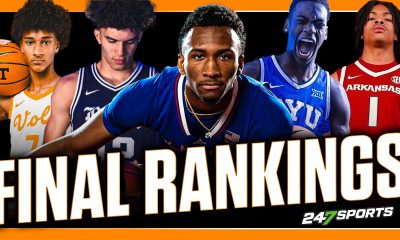
 High School Sports2 weeks ago
High School Sports2 weeks agoSix college basketball freshmen who impressed this summer and could surprise in 2025
-

 NIL2 weeks ago
NIL2 weeks agoData and Brands Make the Case for Paying WNBA Players More
-
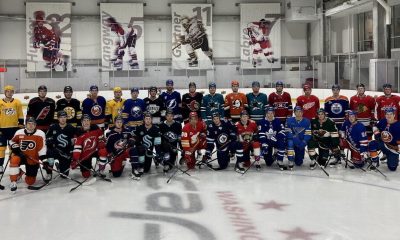
 College Sports5 days ago
College Sports5 days agoNHL rookies weigh in on NCAA, NHL rule changes, new uniforms
-

 Health3 weeks ago
Health3 weeks agoNaomi Osaka Speaks Out About 'Very Bad' Postpartum Depression in New Doc
-

 College Sports2 weeks ago
College Sports2 weeks agoLiberty at James Logan Girls Water Polo
-

 Sports2 weeks ago
Sports2 weeks agoUpper Michigan Today highlights sports injury prevention and recovery options for student athletes
-

 Sports7 days ago
Sports7 days agoReview
-

 NIL2 weeks ago
NIL2 weeks agoDJ Lagway: Jordan Brand’s newest NIL acquisition
-

 Professional Sports6 days ago
Professional Sports6 days agoRecovering after a workout at UFC Gym
-

 Motorsports2 weeks ago
Motorsports2 weeks ago2025 Panini Select NASCAR Racing Checklist Details, Box Info































